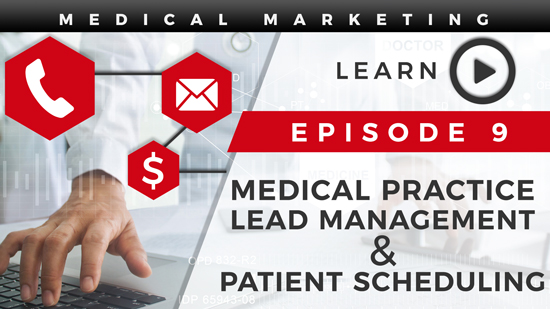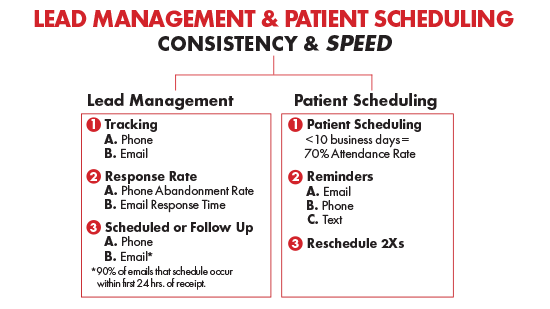Lead management and patient scheduling are two of the most important processes of your medical practice. They are intertwined operating philosophies that–when executed correctly-bring money in the door and keep patients happy. When managing leads, whether by phone or email, consistency and speed are key. To understand how to optimize these factors, however, it is profoundly helpful to understand how they influence your both your practice and the standard you set for patient interaction.
"When the process is consistent, you create a baseline and are able to accurately track conversions."
- Consistency – In order to measure the success of your lead management process every phone call and email should follow the same process. The experience for the patient should be the same regardless of who answered the phone or when they called. When the process is consistent you create a baseline and are able to accurately track conversions and determine what’s working vs. what could be improved.
- Speed – In business, speed kills. The speed by which you follow up with interested patients is often the difference between a new appointment and a missed opportunity. At RSI we recommend responding to email leads within minutes and striving for a phone abandonment rate of 5% or less.
Lead Management Basics
In order to increase your leads you have to be able to understand where they are coming from and how they are being managed. At RSI we recommend your lead management process include these critical steps:
- Tracking – Ensure you know what type of medical marketing prompted a new patient to call. Utilize different phone numbers for each marketing channel so you can track your return on investment and determine the marketing channels that result in the most conversions.
- Response Rate/Speed – It is important to understand your response rate to email and phone call leads. Medical practices miss up to 20% of their phone calls during business hours. Do you know your phone abandonment rate? Do you know how fast you respond to an email lead?
- Follow-ups – When a patient doesn’t schedule after the initial contact, your follow-up process should come to the rescue. Send a follow-up via email multiple times the first and second day and then again on the fifth and tenth day to optimize conversion potential. Most importantly, define and measure your follow-up process.
Patient Scheduling Basics
You’ve answered the phone and a new patient is ready to schedule an appointment. Now you have to ask yourself: is your process up to par? Your new patient timeline, reminder protocol and openness to last-minute schedule changes are critical components of the patient scheduling process.
- New Patient Timeline – Can you schedule a new patient within 10 business days? We’ve seen that being able to schedule a new patient in less than two weeks can help contribute to a 70% or better attendance rate.
- Reminder Protocol – Use software automation that can handle this for your staff. There are programs available that can send automatic phone calls, emails and text messages – each crucial to maintaining your attendance rate.
- Cancellations – Check your ego at the door when someone reschedules last-minute. In the world we live in everyone is concerned with their own problems and rescheduling an appointment (even two times) shouldn’t concern your staff. How you react to last-minute cancellations is a differentiating factor that can allow you to make a lot more money in the long run.


















